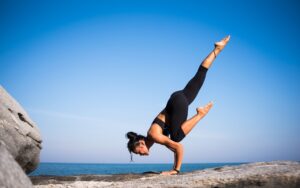Introduction
Swimming and running are two well-known types of cardiovascular activity, each offering exceptional advantages and difficulties. Whether you’re a fledgling hoping to begin another wellness normal or an accomplished competitor looking to stir up your exercises, picking either swimming or running can be an overwhelming choice. In this article, we’ll give an extensive correlation between swimming and running, investigating their particular advantages, downsides, and contemplations to assist you with figuring out which one is ideal for you. Swimming vs. Running: Which One Is Right for You?
1. Cardiovascular Benefits
Both swimming and running proposition incredible cardiovascular advantages, further developing heart well-being, lung limit, and in general perseverance. Swimming gives a full-body exercise that draws in various muscle bunches at the same time while running principally focuses on the lower body muscles. The lightness of water in swimming lessens the influence on the joints, making it a reasonable choice for people with joint torment or wounds. Swimming vs. Running: Which One Is Right for You?
2. Calorie Consumption and Weight Loss

Running normally consumes more calories each hour contrasted with swimming, making it a more productive choice for weight reduction and calorie consumption. In any case, swimming can, be a successful calorie-consuming activity, particularly while consolidating focused energy stretches or utilizing testing strokes like butterfly or breaststroke.
3. Influence on Joints and Injury Risk

One of the fundamental distinctions between swimming and running is the effect on joints and the chance of injury. Running is a high-influence action that puts weight on the knees, hips, and lower legs, expanding the gamble of abuse wounds, for example, shin braces, stress cracks, and IT band disorder. Swimming, then again, is low-influence and delicate on the joints, making it appropriate for people with joint pain or other joint circumstances.
4. Muscle Commitment and Strength Building
Swimming and running draw in various muscle gatherings and can assist with developing fortitude and perseverance in unmistakable ways. Running fundamentally focuses on the muscles of the lower body, including the quadriceps, hamstrings, calves, and glutes, while likewise captivating the center muscles for adjustment. Swimming connects with the chest area muscles, including the chest, back, shoulders, and arms, as well as the center and leg muscles for impetus. Swimming vs. Running: Which One Is Right for You?
5. Assortment and broadly Educating Opportunities
Both swimming and running deal valuable open doors for assortment and broadly educating by integrating various strokes or landscapes into your exercises. Sprinters can shift their exercises by running on trails, tracks, or streets, and integrating stretch preparation, slope rehashes, or rhythm runs. Swimmers can stir up their exercises by utilizing various strokes, swimming drills, or gear, for example, kickboards, pull floats, or blades.
6. Availability and Convenience
Running is an exceptionally open type of activity that should be possible anyplace, requiring insignificant hardware other than a decent set of running shoes. Swimming, then again, expects admittance to a pool, which may not be as promptly accessible or helpful for everybody. Be that as it may, numerous networks offer public swimming pools or sporting offices with lap paths for swimming exercises.
7. Psychological Wellness and Stress Relief

Both swimming and running have been displayed to emphatically affect emotional well-being and stress help. The cadenced idea of running and the reflective nature of swimming can assist with lessening pressure, further developing temperament, and advancing unwinding. The lightness of water in swimming can meaningfully affect the brain and body, making it a remedial type of activity for people managing nervousness or sorrow.
8. Social Communication and Community
Running frequently offers more open doors for social connection and local area commitment contrasted with swimming. Numerous urban areas have nearby running clubs, bunch runs, or coordinated races where sprinters can interface with other people who share their energy for running. Swimming might be a single action, yet a few networks offer Expert swim projects or gathering wellness classes for swimmers searching for social cooperation.
9. Climate and Occasional Considerations
Climate and occasional elements might impact your decision between swimming and running. Swimming should be possible all year in indoor pools, making it a reasonable choice for all seasons. Running outside might be more difficult during outrageous atmospheric conditions, for example, heatwaves, frosty spells, or severe weather conditions, however, numerous sprinters partake in the assortment and landscape of open-air running.
10. Individual Inclination and Enjoyment

Eventually, the choice between swimming and getting boils down to individual inclination and happiness. A few people might favor the sensation of weightlessness and smoothness of swimming, while others partake in the musical beating of feet on asphalt while running. Exploring different avenues regarding the two exercises and standing by listening to your body can assist you with figuring out which one impacts you and lines up with your wellness objectives and way of life.









